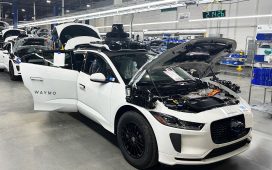Electric and self-driving vehicles such as bikes and cars often steal the spotlight, but there’s a new horizon emerging where technology is setting sail across the seas. Welcome to the era of robot ships.
The Robot “Armada”
This ship might seem ordinary at first glance, but it’s a little more like a sci-fi tale upon closer examination.
According to a BBC report, these ships are controlled remotely and equipped with advanced technology like GPS, cameras, radars, microphones, and satellite communications.
This vessel is part of Ocean Infinity’s (OI) “Armada,” a fleet that will eventually comprise 23 ships. Colin Field, OI’s head of remote systems, explains, “We’ve equipped her with additional technology and designed her to be ‘robotic.’”
Despite their robotic nature, these ships will still carry a reduced crew compared to conventional vessels of similar size.
So, what’s the purpose of these “robotic” ships?
OI aims to use them for seabed surveys for offshore wind farms and for inspecting underwater infrastructure for the oil and gas industry.
These ships will be controlled from onshore operation centres, located in places like Southampton. These centres feature controls similar to video games, allowing operators to manoeuvre the ships using live streams from their cameras and sensors.
Future Of Maritime Technological Transport
The rise of robotics and remote control in ships highlights how technology is reshaping transportation. While we often focus on how tech is transforming vehicles on land or in the sky, maritime industries are also undergoing a transformation worldwide.
This is unsurprising. After all, the maritime industry is valuable and serves an array of purposes from transportation and delivery, offshore oil and gas drilling, ocean research and ecosystem protection, tourism and offshore wind power.
To ensure this industry can better serve its purposes on a global scale, technology is being leveraged to enhance maritime operations. However, challenges such as bad weather, ocean traffic, sustainability, crew fatigue, cyberattacks and technical glitches persist, especially with remote vessels lacking onboard personnel to address issues promptly. All these issues will need to be addressed before robotic sea vessels can be adopted on a widespread scale.
Despite these challenges, there’s optimism for the future of autonomy at sea.
The International Maritime Organisation (IMO) and governments like the UK are actively addressing concerns to ensure safety, emphasising the importance of having a human captain, even in remotely controlled ships, to mitigate risks and ensure smooth operations.
As these issues continue to be ironed out, one can only hope that experiments such as the latest robotic ship from IO will help the maritime industry work out how best to incorporate technology into its operations to ensure any future vessels will be able to set sail safely out at sea.









